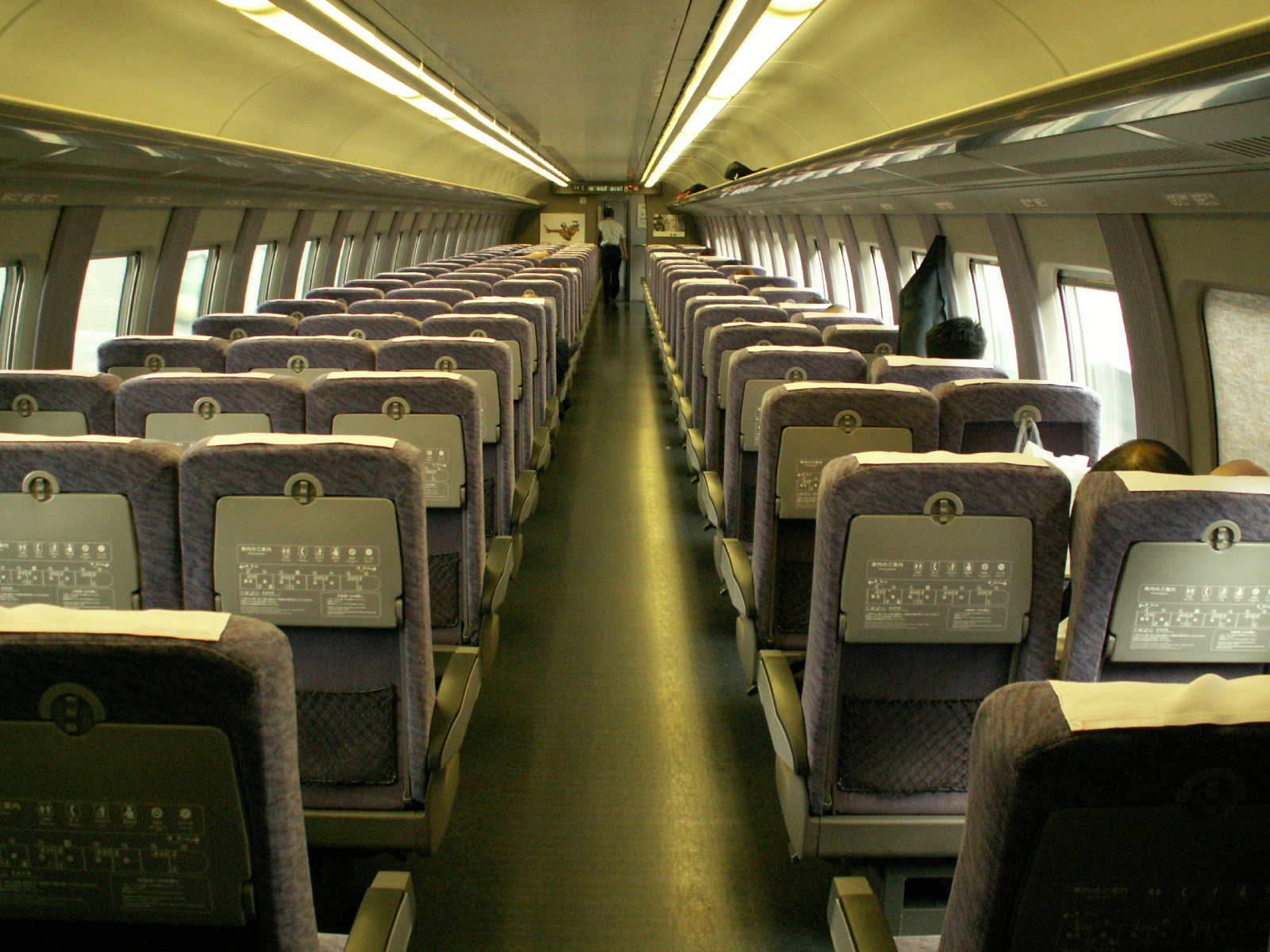Travel on train depends on a few things.
1. Where you are going
2. Which line will you be taking
3. How much are you willing to spend.
 For long distance travel one would probably use the bullet train (shinkansen) (新幹線)
For long distance travel one would probably use the bullet train (shinkansen) (新幹線)The inside of these trains could easily be confused for an airplane!
These trains are can reach speeds of 170 MPH (at the fastest) Not all of the shinkansen go this fast. That's were the first comes in. Where are you going? Due to noise pollution regulations many trains have to go slower in residential areas. However for short travel one will for the most part be using the local trains.
While most JR trains are the same, there can be difference depending on how old the line is, how much is it used, and where is it located. In Tokyo most of the trains are less "comfortable" than the shinkansen. The commuter trains are used to haul as many people as possible.
 The Yamanote line (Also known as the Tokyo loop line) Has cars that are referred to as "Cattle Cars" these cars have fold up seats that are folded up to help make room for the morning rush. The Yamanote line is the best and worst of Japan's train line. Anyone who rides the Yamanote might think that all of Japan's trains are bilingual and they are always packed. While it's true that Japan has tried to "modernize" them selfs by putting most signs in romaji (wester characters) there are still problems outside of the big cities. For instance. While on the Yamanote line you are given the luxury of signs that say what the next stop is, what lines you can transfer to, and if there are any delays in both English and Japanese. However, after you transfer off that line, you will be greeted by little to no English help and the stop announcements will be in Japanese. While it's helpful it also sets up for a fall. The over crowding on the Yamanote is a problem that will never be solved. Between the hours of 7:00 and 10:00 the trains are impossible to get on as everyone is rushing to their jobs in inner Tokyo. People pushers help get the job done.
The Yamanote line (Also known as the Tokyo loop line) Has cars that are referred to as "Cattle Cars" these cars have fold up seats that are folded up to help make room for the morning rush. The Yamanote line is the best and worst of Japan's train line. Anyone who rides the Yamanote might think that all of Japan's trains are bilingual and they are always packed. While it's true that Japan has tried to "modernize" them selfs by putting most signs in romaji (wester characters) there are still problems outside of the big cities. For instance. While on the Yamanote line you are given the luxury of signs that say what the next stop is, what lines you can transfer to, and if there are any delays in both English and Japanese. However, after you transfer off that line, you will be greeted by little to no English help and the stop announcements will be in Japanese. While it's helpful it also sets up for a fall. The over crowding on the Yamanote is a problem that will never be solved. Between the hours of 7:00 and 10:00 the trains are impossible to get on as everyone is rushing to their jobs in inner Tokyo. People pushers help get the job done.Well I've grown tired. Been packing and cleaning all day (though the only you can tell happened was the packing)
Only one more day!!!!
